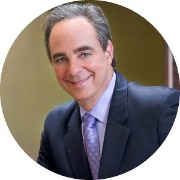Amidst the many chronic health conditions facing our patients today, there is perhaps none as pervasive as diminished overall health and wellbeing. Yet, these patients are often some of the most difficult to treat, because the foundation of their health is shaky at best. These are the patients who seem to sap our energy and diminish the promise of healing that drew us into medicine in the first place. We might even remark on how difficult these patients are, and how much we would like to treat healthier patients. Well, there is a solution!
Implementing the WellMatrix Health Resiliency Program
The solution is LMRC’s WellMatrix Health Resiliency Program. This program will teach you how to turn even your toughest patients into ones you enjoy working with, ones who will be motivated to resolve their illnesses and achieve optimal wellbeing. We recommend joining a free, no-obligation info session with one of our Practice Consultants to walk through the program and determine how to most effectively implement it into your unique practice model.
Make sure your patients know you are there to partner with them, and that you will give them sound medical advice. This is not a top-down process! They have access to the same information you do. The difference is that they haven’t had your training, and don’t have your insights or wisdom. Let them know that they have options, and you can help them decide which ones are best for them.
Then, start talking about creating true wellness by sharing your own definition of wellness. Perhaps bring in some of the concepts of the Blue Zones, where locals have a low prevalence of illness and longer lifespans. You can also talk with them about some of the emerging concepts of aging, where studies show we can actually reverse some of the aging process! Explain to them that you want to help them develop physiologic resilience so that their bodies can learn to fight off disease and handle dietary changes more easily. Talk to them about metabolic reserve, which is the body’s supply of necessary nutrients used to counteract physiological stress. These conversations will help open the lines of communication on creating health, and how you can support them on this journey.
The 4 Pillars of Wellbeing
With this foundation established, it is time for them to begin their own journey back to wellbeing. To do this, we suggest following the four pillars of the WellMatrix Health Resiliency Program:
1. Nutritional Wellbeing
Good nutrition begins not with supplements, but with a nutrient-dense diet. Help your patients wean themselves off the Standard American diet (SAD) and onto something far more nourishing. A Mediterranean Diet is nutritious and delicious, with lots of studies supporting its health benefits. Then, either through testing or your own medical knowledge, make some judicious suggestions on the correct use of supplements. Highly purified and esterified omega-3s, vitamin D, a chelated magnesium supplement, a probiotic and a foundational multivitamin are often great choices to start.
2. Physical Wellbeing
Regular physical exercise boasts a myriad of health benefits, including treating depression, reducing global inflammation, strengthening bones, improving insulin sensitivity and more. As we age, exercise is particularly important. Make sure your patients include a variety of stretching, balancing, aerobic and strengthening exercises in their daily regimen.
3. Emotional Wellbeing
Stress has wide-raging effects on our bodies, with a reported 80% of all primary care visits related to stress. As a practitioner, you should be proficient in administering and interpreting salivary cortisol diurnal rhythm tests. Once you understand where on the stress curve your patient is, you can help them cope better by using lifestyle modification techniques, breathing and mindfulness techniques, learning the relaxation response or even progressive muscle relaxation techniques. This is where nutraceuticals for HPA axis dysfunction are extremely valuable. Sleep and stress are intimately connected, so make sure your patients understand good sleep hygiene. Get them off over-the-counter sleep aids that disrupt the sleep cycle and encourage them to use gentler herbal sleep aids.
4. Environmental Wellbeing
The importance of a healthy living environment cannot be overstated. A recent study showed that 60% of patients who had a carotid endarterectomy plaque had measurable amounts of environmental plastic in their plaque. We live in a soup of toxic chemicals. Teach your patients how to minimize the effects of these chemicals. Educate them about The Dirty Dozen™ and The Clean Fifteen™, as well as foods and herbs to help them detoxify environmental toxins. Finally, remember that environmental toxins include emotional toxins, such as spousal abuse, work or online bullying, or even sexual abuse. Let them know they can talk to you about this, and that you can help them find the help they need.
.png?sfvrsn=445555e9_1)
Once your patients understand that you are there to help them transform their lives from a focus on illness to a focus on wellbeing, they will become more loyal, more inclined to deal with their illnesses, and more motivated to pursue healthy options. You will find this is a good recipe to develop the type of practice that leaves you more inspired than depleted, one in which you enjoy going to work rather than feeling burned out. This will be the kind of medicine you have always wanted to practice.
Good luck on your journey!

Steve Amoils, MD is the Co-Medical Director of the AIM for Wellbeing (AIM) in Cincinnati, together with his wife Sandi Amoils, MD. AIM is a large integrative medical center and part of the Christ Hospital Network. AIM has averaged over 30,000 visits per year since its inception in 1999 and offers accredited physician fellowship training in integrative medicine. Dr. Amoils is a former Assistant Professor at the University of Cincinnati and former President of the Ohio Chapter of the American Academy of Medical Acupuncture. He has received numerous awards for his achievements, including America’s Top Doctor in Family Medicine and Cincy Top Doctor yearly since 2007.
Trained in South Africa, London, and then in the United States, Steve is a board-certified family physician. After completing medical training in South Africa in 1984, he and Sandi spent two years traveling around the world, studying various indigenous medical systems. In 1987 they immigrated to the US, where they ultimately both practiced as family physicians in Cincinnati. In 1999, at the behest of a large hospital group, they opened Alliance Integrative Medicine (now called AIM for Wellbeing,) to offer patients a comprehensive, personalized, integrative approach to medicine. AIM has been recognized as a national leading center in integrative medicine since 2004, and Dr Amoils has been a site investigator on three major national studies on integrative medicine.
Steve and Sandi are co-authors of two books. Get Well & Stay Well – Optimal Health through Transformational Medicine was published in 2012. The book expounds on their philosophy of helping patients transform illness into wellness through the best of conventional medicine, functional medicine and integrative therapeutic options. Its successor, AIM for Wellbeing, due out in early 2024, discusses the conglomeration of common diseases we see today, something they call the SAD SYNDROME.



